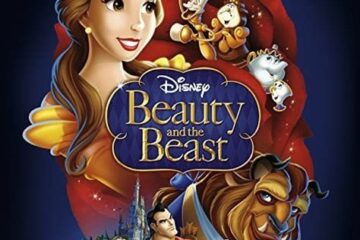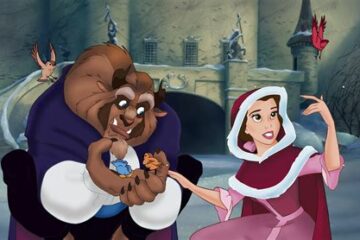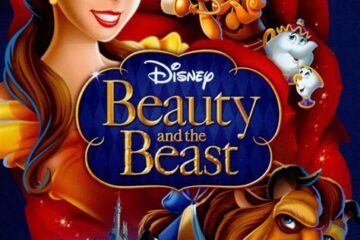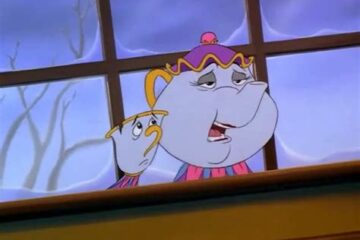Analyzing the Themes and Symbolism in Beauty and the Beast Cartoon

Analyzing the Themes and Symbolism in Beauty and the Beast Cartoon
The tale of Beauty and the Beast has captivated audiences for centuries, with its magical elements and timeless themes. In this blog post, we will delve into the enchanting origins and meaning behind the Beast’s character, as well as the symbolism and significance of the rose. Moreover, we will explore the central theme of inner beauty and how it is intricately woven throughout the narrative. Furthermore, we will discuss the transformative power of love in breaking the curse and the exploration of societal norms and stereotypes, challenging traditional roles. Join us as we embark on an enchanting journey through the beauty and depth of Beauty and the Beast.
The enchantment of the Beast: Origins and meaning
The enchantment of the Beast in the tale of Beauty and the Beast is a captivating aspect that has fascinated audiences for centuries. The origins of this enchantment can be traced back to ancient folklore and mythology, where stories of cursed individuals turning into beasts were common. In these tales, the curse was often a result of a person’s arrogance or cruelty, and the transformation into a beast served as a punishment or lesson.
The meaning behind the enchantment of the Beast goes beyond a simple punishment. It symbolizes the inner struggles and flaws that lie within all individuals. The Beast’s physical transformation reflects his internal battle with his own beastly nature and serves as a metaphor for the human struggle with darkness and the need for redemption.
One possible interpretation of the meaning behind the Beast’s enchantment is that it represents the consequences of vanity and superficiality. The Beast’s initial arrogant and cruel behavior towards others results in his transformation, emphasizing the importance of humility and kindness. Through his relationship with Belle, the Beast learns the importance of inner beauty and the power of love to overcome even the most formidable curses.
- The enchantment of the Beast represents a punishment or lesson for arrogance and cruelty.
- It symbolizes the internal struggles and flaws within individuals.
- The transformation reflects the human battle with darkness and the need for redemption.
- One interpretation is that it represents the consequences of vanity and superficiality.
- The Beast’s relationship with Belle teaches him the importance of inner beauty and love.
| Origins | Meaning |
|---|---|
| Ancient folklore and mythology | Representation of inner struggles and flaws |
| Common theme of cursed individuals | Metaphor for the human battle with darkness |
| Punishment or lesson for arrogance and cruelty | Symbolizes the need for redemption |
The significance of the rose: Love and time
The significance of the rose in literature and art has been a recurring theme throughout history. The rose is often used as a symbol to represent love and time, and its significance can be found in various cultures and time periods. From ancient Greek mythology to Shakespeare’s sonnets, the rose has captivated hearts and minds with its beauty and symbolism. In this blog post, we will explore the deep meaning behind the rose and its connection to love and the passage of time.
In ancient Greek mythology, the rose was believed to be created by the goddess of love, Aphrodite. According to the myth, when Aphrodite’s lover, Adonis, was killed, she rushed to his side and pricked her foot on a thorn, causing her blood to turn the white roses red. This story not only explains the origin of the rose’s color but also showcases the rose’s connection to love and sacrifice.
Throughout history, the rose has continued to be associated with love and romance. In the famous play “Romeo and Juliet” by William Shakespeare, Juliet declares, “What’s in a name? That which we call a rose by any other name would smell as sweet.” This quote highlights the idea that love is not dependent on external factors, such as one’s name or social status, but rather on the essence of one’s being.
- The rose has also been used as a symbol of time and its fleeting nature. In the poem “A Red, Red Rose” by Robert Burns, the speaker compares his love to a red rose that will never wither: “O my Luve’s like a red, red rose / That’s newly sprung in June; / O my Luve’s like the melodie / That’s sweetly play’d in tune.” This comparison emphasizes the eternal quality of love, even in the face of the passage of time.
- Furthermore, the rose is often associated with the concept of beauty. The delicate petals and intoxicating scent of the rose have long been admired and considered a symbol of grace and elegance. Its beauty is seen as a reflection of the inner beauty that can be found within individuals.
| Symbolism of the Rose | Meaning |
|---|---|
| Love | The rose symbolizes love and passion, particularly romantic love. |
| Time | The rose represents the fleeting nature of time and the transience of life. |
| Beauty | The rose is seen as a representation of inner beauty and grace. |
In conclusion, the significance of the rose in relation to love and time is deeply rooted in various cultures and literary works. Its symbolism has remained constant throughout history, representing love, the passage of time, and inner beauty. Whether it be in mythology, poetry, or art, the rose continues to enchant and enthrall with its timeless beauty and profound meaning.
Exploring the beauty within: Inner beauty as a central theme
Exploring the Beauty Within: Inner Beauty as a Central Theme
Beauty has long been associated with physical appearance, but there is another kind of beauty that often goes unnoticed – inner beauty. Unlike external attractiveness, inner beauty pertains to the qualities and characteristics that emanate from within a person. It encompasses traits such as kindness, compassion, empathy, and intelligence, which have the potential to transform an individual’s entire persona.
In today’s society, where physical appearances are heavily emphasized, it is essential to delve deeper into the notion of inner beauty and appreciate its profound impact on our lives. Inner beauty serves as a reminder that true beauty surpasses the superficial layer and lies deep within one’s soul. This concept has been beautifully portrayed in various artistic works, literature, and movies, each highlighting the significance of inner beauty as a central theme.
One such example is Disney’s animated film, “Beauty and the Beast.” The tale revolves around Belle, a young woman who discovers the enchanting beauty within the Beast. Initially, Belle is repulsed by the Beast’s external appearance, but as she spends time with him, she unravels the gentle heart and kind soul buried beneath his beastly exterior. The movie emphasizes the transformative power of inner beauty and sends a powerful message encouraging viewers to look beyond physical appearances.
- The enchantment of the Beast: Origins and meaning
- The significance of the rose: Love and time
- The transformative power of love: Breaking the curse
- Societal norms and stereotypes: Challenging traditional roles
| Title | Description |
|---|---|
| The enchantment of the Beast: Origins and meaning | This section explores the origins and symbolic meaning behind the enchantment of the Beast in the tale of “Beauty and the Beast.” |
| The significance of the rose: Love and time | Here, we delve into the significance of the rose in the story and how it represents the concepts of love and time. |
| Exploring the beauty within: Inner beauty as a central theme | This section explores the central theme of inner beauty in various artistic works and its impact on our perception of beauty. |
| The transformative power of love: Breaking the curse | Discover how love has the power to break curses and transform individuals, as exemplified in “Beauty and the Beast.” |
| Societal norms and stereotypes: Challenging traditional roles | Learn how “Beauty and the Beast” challenges societal norms and stereotypes through its portrayal of non-traditional gender roles. |
The transformative power of love: Breaking the curse
The transformative power of love is a recurring theme in many fairy tales and stories. One captivating tale that beautifully portrays this theme is the story of Beauty and the Beast. The enchanting love story between a cursed Beast and a compassionate young woman not only captures our hearts but also teaches us valuable lessons about the power of love.
At the heart of this tale lies a powerful curse that has transformed a handsome prince into a fearsome Beast. Only true love can break the curse and restore him to his human form. This curse serves as a metaphor for the inner struggles and flaws that we all possess. It symbolizes the darkness that can reside within us and the potential for transformation through the power of love.
The Beast’s physical appearance may be intimidating, but as the story progresses, we discover the beauty within him. This inner beauty is brought to light by the love and kindness shown to him by Beauty. Despite initial fear and hesitation, she looks beyond his outward appearance and begins to see the Beast’s gentle and genuine nature.
- The selfless act of Beauty choosing to stay with the Beast in his castle is an embodiment of the transformative power of love.
- Through her unconditional love and patience, Beauty begins to break the curse that has held the Beast captive for so long.
- Her acceptance of him, flaws and all, allows him to let go of his anger and bitterness, and open himself up to the possibility of love.
This tale reminds us that love has the ability to transform not only others but also ourselves. Love has the power to break through the walls we’ve built around our hearts and free us from the curses that hold us back. It teaches us that true love looks beyond physical appearance and sees the beauty within. It challenges societal norms and stereotypes, showing us that love can transcend boundaries and bring about positive change in our lives.
| Key lessons from Beauty and the Beast |
|---|
| The importance of looking beyond appearances: Beauty teaches us to see beyond external looks and recognize the beauty within others. |
| The transformative power of love: Love has the ability to break curses, heal wounds, and transform lives. |
| The strength of acceptance: Beauty’s acceptance of the Beast demonstrates the power of acceptance and how it can bring about positive change. |
Beauty and the Beast is a timeless tale that reminds us of the incredible transformative power of love. It encourages us to look beyond appearances, challenge societal norms, and embrace the beauty within ourselves and others. Through love, we have the ability to break the curses that hold us back and create a brighter, more compassionate world.
Societal norms and stereotypes: Challenging traditional roles
Societal norms and stereotypes have long dictated how individuals are expected to behave based on their gender, race, or any other characteristic. These norms and stereotypes can be limiting and often reinforce inequality and discrimination. However, in recent years, there has been a growing movement to challenge these traditional roles and break free from the constraints they impose.
One way in which traditional roles are being challenged is through the dismantling of gender norms. Traditionally, society has assigned specific roles to men and women, with men being dominant and women being submissive. However, people are starting to challenge these norms by advocating for gender equality and rejecting the idea that certain roles are exclusive to one gender. This has resulted in the rise of feminism and the empowerment of women in various spheres of life, including politics, business, and education.
Another aspect of traditional roles that is being challenged is societal expectations surrounding career choices. In the past, certain professions were considered suitable for men while others were seen as more appropriate for women. However, this mindset is gradually changing as more individuals are encouraged to pursue their passions and interests regardless of gender. Men are now taking on roles traditionally considered “feminine,” such as nursing or teaching, while women are breaking into traditionally male-dominated fields like engineering and technology.
Racial and ethnic stereotypes are also being confronted in an effort to challenge traditional societal norms. Stereotypes based on race or ethnicity often perpetuate discriminatory attitudes and limit opportunities for individuals from marginalized communities. However, there is a growing awareness of the harmful effects of these stereotypes, and steps are being taken to challenge and deconstruct them. This includes promoting diversity and inclusivity in various settings, such as schools, workplaces, and the media.
Challenging traditional roles and societal norms is crucial for creating a more inclusive and equal society. It allows individuals to express themselves freely, pursue their passions, and contribute to society without fear of judgment or discrimination based on their gender or other characteristics. By challenging these norms, we can break free from the limitations they impose and create a world where everyone is valued and respected for who they are, rather than conforming to predefined roles and expectations.
List of Ways to Challenge Traditional Roles:
- Educate Yourself: Take the time to educate yourself on the various forms of inequality and discrimination that exist in society.
- Question Assumptions: Challenge the assumptions and stereotypes that you may hold about certain groups of people.
- Speak Up: Use your voice to advocate for equality and challenge discriminatory practices or attitudes when you encounter them.
- Support Diversity: Support and promote diversity in your workplace, school, or community.
- Encourage Non-Traditional Choices: Encourage individuals to pursue their interests and passions, regardless of societal expectations.
Table: Traditional Roles vs. Challenging Roles
| Traditional Roles | Challenging Roles |
|---|---|
| Men as breadwinners | Shared financial responsibilities |
| Women as caregivers | Shared household responsibilities |
| Men in leadership positions | Equal opportunities for men and women in leadership |
| Women in nurturing professions | Women in various professions, including STEM fields |
| Racial stereotypes | Promoting diversity and inclusivity |
Frequently Asked Questions
What is the origin and meaning of the Beast in the story?
The Beast represents the inner struggles and flaws that humans possess, emphasizing the importance of inner beauty and personal transformation.
What is the significance of the rose in the story?
The rose symbolizes love and time. It serves as a constant reminder of the Beast’s curse and the limited time he has to find true love.
How does the story explore the theme of inner beauty?
The story emphasizes the idea that true beauty lies within a person and that appearances can be deceiving. It encourages readers to look beyond physical attractiveness and focus on inner qualities.
What role does love play in breaking the curse?
Love is depicted as a transformative power that can break the curse. It is through Belle’s love and selflessness that the Beast is able to find redemption and regain his human form.
How does the story challenge societal norms and stereotypes?
The story challenges traditional gender roles and stereotypes by portraying Belle as a strong and independent character who defies societal expectations. It sends a message that individuals should not be judged based on their appearance or social status.
What is the symbolism behind the interplay of light and darkness?
The interplay of light and darkness represents the internal struggles and conflicts within the characters. It symbolizes the battle between good and evil, bringing depth and atmosphere to the story.
What is the underlying message about finding true beauty?
The story teaches readers to not judge others based on their outward appearance. It emphasizes the importance of looking beyond physical beauty and finding true beauty within a person’s character and actions.
The Beauty and the Beast Cartoon Soundtrack: A Musical Journey
September 29, 2023Top 10 Beauty and the Beast Cartoon Episodes You Need to Watch
September 26, 2023Exploring the Magical World of Beauty and the Beast Cartoon
September 26, 2023The Evolution of Beauty and the Beast Cartoon Characters
September 26, 2023A Deep Dive into the Making of Walt Disney’s Beauty and the Beast
September 26, 2023
Leave a reply Cancel reply
Recommended
-
Exploring the Magical World of Beauty and the Beast Cartoon
September 26, 2023 -
Top 10 Beauty and the Beast Cartoon Episodes You Need to Watch
September 26, 2023 -
Beauty and the Beast Opening Song Lyrics
October 2, 2021









